The research vessel Neil Armstrong arrived to its home port at the Woods Hole Oceanographic Institution (WHOI) dock for the first time Wednesday, escorted by the WHOI coastal research vessel R/V Tioga, two Coast Guard vessels and fireboats from neighboring towns.
“What a wonderful day for Woods Hole, for the Commonwealth of Massachusetts, for Woods Hole Oceanographic Institution, and the entire ocean science community,” enthused WHOI President and Director Mark Abbott. “We’re very proud to have been selected by the Office of Naval Research to operate the Neil Armstrong. It is an enormous honor and a great responsibility.”
Six years ago, the U.S. Navy announced plans to construct two ships in a new Ocean Class of research vessels and in 2010, awarded WHOI the no-cost lease to operate the first of the ships. Two years later, the Navy announced the first ship would be named Neil Armstrong and its sister ship, to be operated by Scripps Institution of Oceanography, would be named Sally Ride. The 238-ft. Neil Armstrong is the newest ship in the U.S. academic fleet, and one of just seven in that fleet capable of accessing all but ice-covered areas of the global ocean.
In his remarks, Abbott also noted WHOI’s long history with the Office of Naval Research (ONR) and the Navy and their support for ocean science, as well as the key role the National Science Foundation has played in funding research at sea and science operations.
The Neil Armstrong emerged over the horizon between Martha’s Vineyard and Naushon Island at approximately 9:45 a.m. Wednesday, having completed a weeklong expedition that started in Norfolk, Va., to test some of the vessel’s research capabilities. Amidst the sounds of ships’ whistles, fireworks, canon shots, and cheers from the assembled crowd, members of Armstrong’s crew tossed lines to those standing by on shore, ready to secure the ship to the pier.
“It was Jacques Cousteau who used to say, ‘You need to get wet to understand the ocean,’” said David Scully, chairman of the WHOI Board of Trustees. “Well, WHOI was founded on the belief that you need to go to sea. Today, we are as strongly committed to this ideal as ever, and there is no finer testimony to that fact than the research vessel Armstrong and her fine crew under Captain Kent Sheasley.”
The Neil Armstrong is the most recent in a long string of ships operated by WHOI since 1930, including Atlantis, the nation's first vessel constructed specifically to carry out oceanographic research. The Armstrong replaces the R/V Knorr, which served ocean science for 44 years and had a reputation as a very capable ship, a reputation earned in part because of the knowledge, ability and experience of its crew. Many of the Armstrong’s crew, including Captain Sheasley, served together aboard the Knorr.
In addition to remarks by Abbott and Scully, the event was also marked by comments from Dr. Frank Herr, head of the U.S. Navy’s Ocean Battlespace Sensing department, who described the 20-year process of bringing a new ship into the fleet—from the earliest discussions of what was needed, how it would be funded, to the design, construction and commissioning. “It’s a long time coming,” he said. “I wish this ship fair winds and following seas for the next 35 to 40 years.”
Congressman Bill Keating (D-Mass.) agreed, stating, “This is an achievement that is measured more in generational terms because of the time it takes to do this, than in years or even decades,” he said. The last time such an event took place at WHOI was 1997, with the arrival of R/V Atlantis.
Keating also praised WHOI for its scientific track record: “If [one looked] from the great distance of outer space at this beautiful Earth, [for] the point that was the center of this Earth for oceanographic research, it would come—longitude and latitude—right here to Woods Hole. We’re so proud of it being part of this community, and a part of this region.”
Rob Munier, vice president for Marine Operations, the WHOI division responsible for operating ships, warmly welcomed the ship and crew to the WHOI community, and said, “Today is one of those moments – the culmination of over a decade of vision and hard work.” He also shared with the crowd remarks sent from Senator Edward Markey (D-Mass.).
“Climate change threatens our way of life, and the world we know today,” Markey wrote. “In order to prepare for, and ultimately solve one of the greatest challenges of our generation, we must have the knowledge to do so. We cannot ignore our oceans. We know more about the surface of the moon than we do the bottom of the oceans here on Earth. To gain a better understanding of our oceans, we must explore and observe, and for oceanographers, that means going to sea.”
Remarks by astronaut Sunita Williams, a native of Massachusetts, also emphasized the connection between exploration of space and exploration of Earth's oceans.
“Like its shiny sister in space, the International Space Station,” Williams said, “I’m sure [this ship and the scientists and crew aboard it] will make discoveries that will help save lives, open dialogs to solve societal issues, and strengthen international relations, spur on new, innovative business ideas, inspire the next generation of explorers, and perhaps even help sustain life on our lovely little speck of the planet in our universe.”
At the close of the program, harkening back to space explorer Neil Armstrong’s historic planting of the American flag on the lunar landscape, Abbott and Munier presented Carol Armstrong with the WHOI flag set in a frame to commemorate the arrival of the Armstrong to Woods Hole, Mass.
“Neil would love this,” Armstrong said of her husband, “because Neil was Navy. That’s where he started and that’s where his heart was.”
The R/V Neil Armstrong is the most technologically advanced ship in the U.S. academic fleet. The ship contains two multi-beam echo sounders designed to operate at different depths, making Neil Armstrong and, when completed, Sally Ride, the only ships in the UNOLS fleet equipped to conduct high-resolution seafloor surveys almost anywhere the ship can sail.
The ship’s three acoustic Doppler current profilers (ADCPs) can scan the water column at different frequencies to reveal the invisible structure of water at varying depths and resolutions, and a multi-beam, multi-frequency echosounder, the EK-80, can not only detect the presence and abundance of marine life beneath the ship, but also offers the potential to differentiate among species of fish and other marine life hidden beneath the surface.
From an engineering standpoint, as well, the ship is state-of-the-art. In addition to clean-burning diesel-electric generators, variable-frequency DC propulsion means less wear-and-tear on critical components and higher efficiency. The new ship's integrated controls provide access to virtually every critical system, from propulsion and navigation to electrical load to heating and air conditioning to ballast, on touch screens in the engine room and bridge. The navigation system can be monitored and diagnosed from shore.
Advanced features of Neil Armstrong include:
- EPA Tier 3 compliant diesel engines
- Clean ballast system and advanced oily-water separators
- Variable-frequency DC propulsion and drives
- Heave-compensated over-the-side handling system
- Hull form and construction to minimize acoustic interference
- Shore-based monitoring and diagnosis of navigation system
- Integrated engine control, monitoring, and positioning systems
- Advanced suite of oceanographic, meteorological, and communications instruments
- Handicapped-accessible main deck
The R/V Neil Armstrong can accommodate 24 scientists and a crew of 20 at sea for up to 40 days. Throughout the spring and fall the ship will continue to conduct more so-called science verification cruises to test everything from the layout of the ship's lab to its equipment handling systems to its collection of high-tech sensors.
In closing, Abbott welcomed Captain Sheasley and the crew to Woods Hole, presenting them with a commemorative photo of WHOI. “While it’s true a ship in port is safe, that’s not what ships are built for," he said. "We always wish you smooth sailing when you leave, we’ll think about you when you’re gone, and welcome you when you return.”
• 





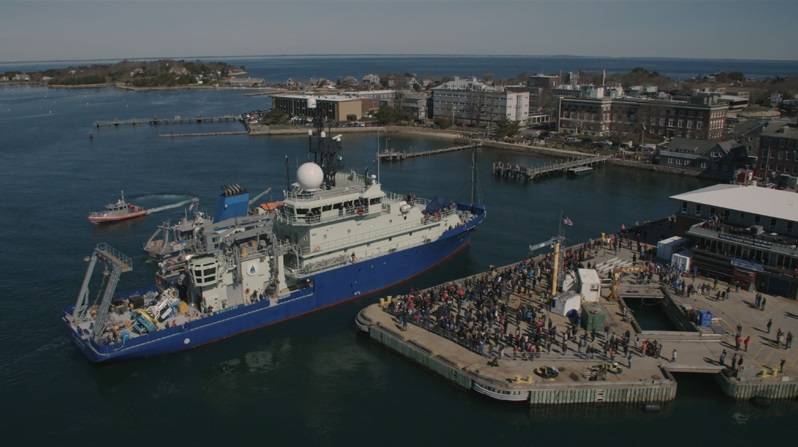
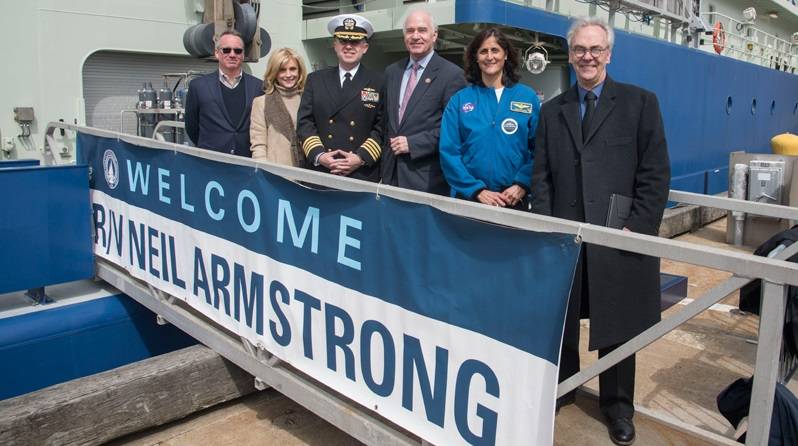
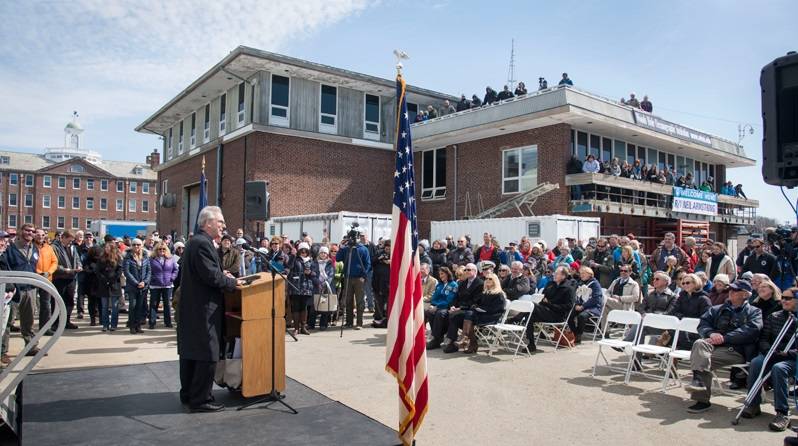
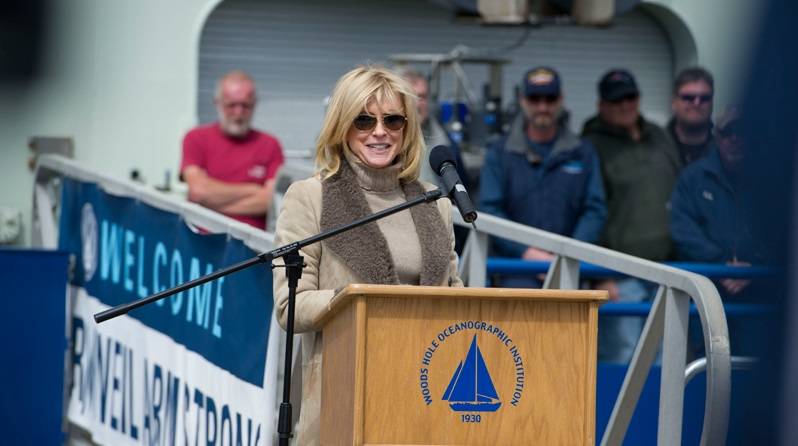
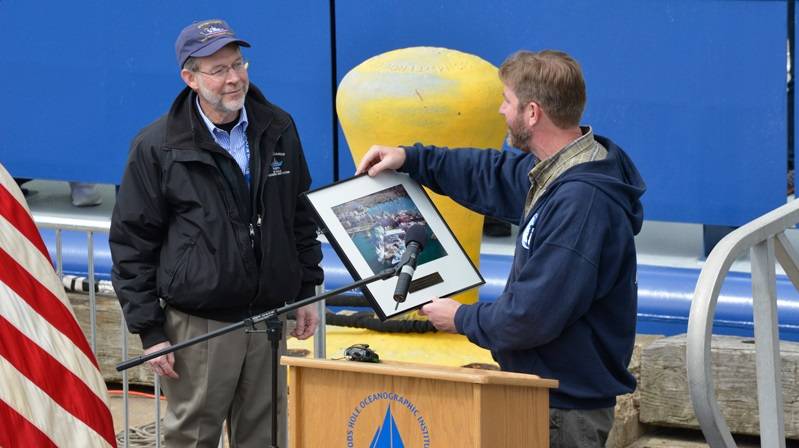
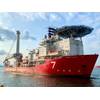


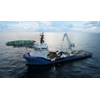











 February 2024
February 2024



